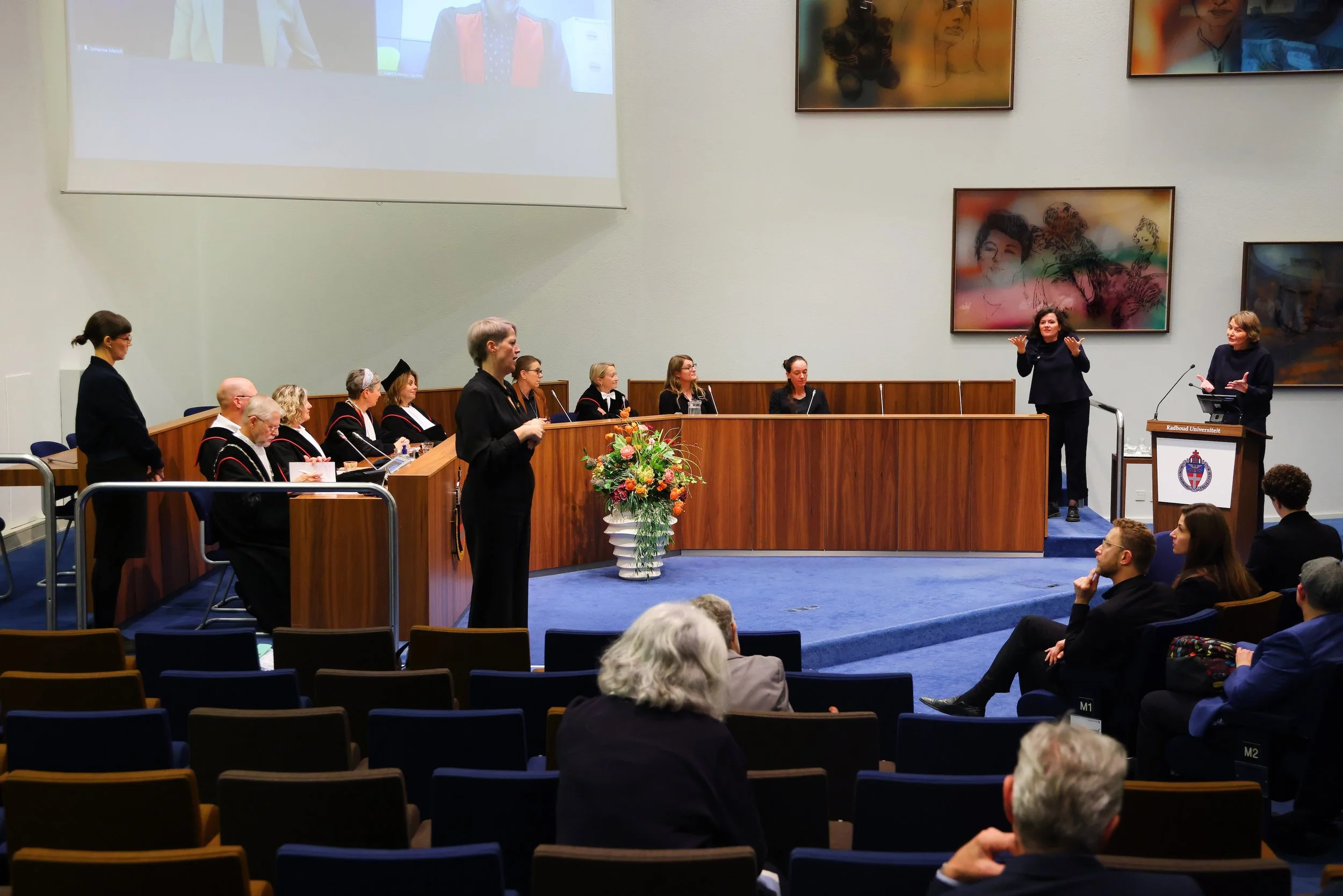MY Phd defence
On 30 October 2023 I successfully defended my dissertation. In the first 10 minutes of the defence I present the summary in International Sign. The languages of the defence were International Sign and English.
My PhD research
In February 2018 I started my doctoral dissertation (PhD project 2018-2023) on interpreting international sign at the Radboud University in Nijmegen, the Netherlands.
My research was part of a larger project “Deaf communication without a shared language” conducted with Deaf and hearing researchers at the Radboud University. My PhD supervisors are Dr. Onno Crasborn and Prof. Jemina Napier.
I carried out my research as an external PhD candidate on a part-time basis (2018-2023). My research was fully self-funded for five years. From May till December 2022 I received a small part-time PhD contract from Radboud University to finalize my thesis.
My main research question was: “What defines and characterizes an International Sign conference interpreter and what are their strategies, skills, and perspectives?” My PhD consists of four separate empirical studies which are published as articles, as well as an introduction, discussion and conclusion.
STUDY 1 - The IS Interpreter’s profile
My first study is a global survey for interpreters working sometimes or regularly with international sign. The study was carried out in 2019. The study resulted in the article ‘Interpreting international sign: mapping the interpreter’s profile’, which has been accepted and was published in January 2021. Please see here the abstract, article, and video in IS >
STUDY 2 - Preparation strategies and process reflection
In my second study of my PhD I focus on the preparation strategies for sign language conference interpreting, comparing International Sign and National Sign Language interpreters. I aim to answer the following question:
What interpreting strategies and techniques does the IS interpreter use differently at conferences than a national sign language interpreter and how does the IS interpreter estimate that actual interpretation success is achieved?
See here the presentation of the preliminary results >
See here more about the publication of the final article and a video in IS >
STUDY 3 - Practitioners’ views on the Quality Assurance of conference interpreters working with International Sign
The aim of this study was to collect the professional perspectives and experiences of practicing IS conference interpreters. This is a follow-up study of the global online survey (study 1). For this study eleven IS conference interpreters, accredited and non-accredited, were interviewed about their views on quality assurance of conference interpreters working with IS.
See here for more info and a presentation in IS >
See here more about the publication of the final article >
STUDY 4 - International Sign conference interpreters as a Community of Practice
In this study I explore the concept of IS conference interpreters as a Community of Practice (COP). For this I used new data from the 2019 global survey of IS conference interpreters as well as follow-up interviews with selected survey respondents. In this fourth study I present a model of interpreter competences as well as a learning path of becoming an IS conference interpreter.
Researching International Sign interpreting as a practitioner
This September (2020), deaf communities around the world celebrated the International Week of the Deaf. The special events were a combination of celebrating deaf cultures and signed languages. They also raised awareness on deaf people’s human rights, such as their right to a national signed language. Numerous happenings by national and international organizations were streamed live and deaf presenters from across the globe shared ideas and best practices. Many of the international events were conducted in International Sign (IS) and interpreted into English. Interpreting from and to IS is not as common as the name ‘International Sign’ might seem to suggest. IS interpreting mainly occurs in international events and projects (Wit, Crasborn, and Napier 2021a).
Read here my full article in the EST Newsletter, November 2020 (57) >


